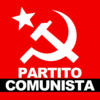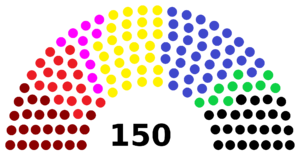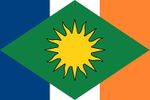1714 Vegno Elections
| |||||||||||||||||||||||||||||||||||||||||||||||||||||||||||||||||||||||||||||||
| |||||||||||||||||||||||||||||||||||||||||||||||||||||||||||||||||||||||||||||||
| Turnout: (% of entitled) | |||||||||||||||||||||||||||||||||||||||||||||||||||||||||||||||||||||||||||||||
|
This lists parties that won seats. See the complete results below. | ||||||||||||||||||||||||||||||||||||
The 1714 AN Vegno Elections will be the third ever general elections of the Republic of Vegno and will see the election of the President of the Republic of Vegno and the composition of the Parliament, the Assemblea Nazionale.
The Parliament will meet for the first session of the 3rd legislature on early 1714 AN. Following the constitutional reform approved in 1708 by the Mancuso I Cabinet, each legislature will last from now on, from three to five years.
As the General Election of Vegno, population will vote both for the President of the Republic, with the two most voted candidates accessing the final ballot a week after, and for the composition of the Parliament, which will reflect the formation of the new government.
Voting system
The electoral law in force is the "Rinaldellum", which regulated the previous elections of 1709 and provides for a mixed electoral system, where:
- 81,33% of the seats (122 of 150 in the Assemblea Nazionale) are assigned through the proportional system in multi-member constituencies on the basis of blocked lists; the allocation of seats is carried out at regional levels.
- 18,66% of the seats (28 of 150) are assigned with a single-round majority system (2 seats for the two most voted party in each single region;
In accordance with the Constitution, modified by the Mancuso I Cabinet 150 deputies are elected. Furthermore, the composition of the parliament and the mandate of President of the Republic will now last for five years instead of three.
The voting paper, which is a single one for the majority and the proportional systems, shows the names of the candidates to single-member constituencies and in close conjunction with them the symbols of the linked lists for the proportional part, each one with a list of the relative candidates. The voter is able to cast their vote in three different ways, among them:
- Drawing a sign on the symbol of a list. In this case, the vote extends to the candidate in the single-member constituency that is supported by that list.
- Drawing a sign on the name of the candidate of the single-member constituency and another one on the symbol of one list that supports them; the result is the same as that described above. Under penalty of annullment, the panachage is not allowed, so the voter cannot vote simultaneously for a candidate in the uninominal constituency and for a list which is not linked to them.
- Drawing a sign only on the name of the candidate for the uninominal constituency, without indicating any list. In this case, the vote is valid for the candidate in the single-member constituency and also automatically extended to the list that supports them; however, if that candidate is connected to several lists, the vote is divided proportionally between them, based on the votes that each one has obtained in that constituency.
Background
From the previous elections of 1709 AN for the 3rd legislature, a fragmented political framework had resulted: the Partito Popolare Vegnese had the relative majority of the Parliament as a single parliamentary group, while Forza Vegno was the most voted party in the country, having his secretary elected as President of the Republic. After nearly one month of difficult negotiations between the main parties, the President of the Republic Luca Zarrella entrusted the formation of the government to Shalva Mancuso, the secretary of the PPV. The Mancuso I Cabinet, supported by a Forza Vegno-PPV-PDC majority, took office on 1709 AN and adopted a liberal political line, characterized by the flag measures of the two majority parties.
The Mancuso I Cabinet has worked for 5 years, with the continous support of FV, PPV and PDC, not without critisims and critics from the opposition of PNV and PC. It managed anyway to end the legislature and a already months before the new election the parties started already their electoral campaign.
Electoral campaign

Following the dissolution of Parliament with the end of 2nd legislature, the electoral campaign officially began. Within the government coalition, the "Partito Democratico Costituzionale" (PDC) secretary Antonio Visciglia ruled out an alliance for the following elections with Luca Zarrella's Forza Vegno (FV), thus trying not to lose another slice of the left electorate to the advantage of the Communist Party (PC). Visciglia said that the government agreement with FV and PPV to reach a majority for the good of the country was not understood by all its electors and brought an "irreversible break" between the letf-wing electors.

Zarrella accused Visciglia of being "arrogant and hypocritical",having first been in government for 8 years together with post-electoral agreements and then not agreeing to form this alliance in view of the elections of 1714. Mancuso and Partito Popolare Vegnese declared themselves to be part of the centre/centre-right pole and not distant from FV ideals; their campaign centered around the Flat-tax, already established for a part of the population, and the positive period Vegno had in the previous two governments . Visciglia criticized FV for their past nearness with PNV and nationalist measures. PDC ran for a wealth tax, minimum wage, support for civil rights such as egalitarian marriage, a law protecting against sexual orientation discrimination, and ius scholae reform to allow children of immigrants who live and study in Vegno to apply for citizenship.
In 1713 AN, the Partito Nazionalista Vegnese (PNV) and the Greens of Peppe Freeda (PF) officially launched their joint alliance for the upcoming election within the "Per il Vegno e per l'Ambiente" coalition, finding an agreement on many points of the program regarding the reclamation of some vegnese areas and on the theme of the environment. After a few days, Lèvati was appointed political leader of the alliance on a black–green platform.
In early 1714 there was another twist in the Vegnese political panorama: a centre coalition was formed before the elections, by Forza Vegno (FV) and Partito Popolare Vegnese (PPV). Zarrella and Mancuso found an agreement on the distribution of single-member districts between the allies and agreed also on the candidate for the Presidency of the Republic, which would be proposed by the party that gains more votes. They campaigned on a mixed-program based on the flat tax, constitutional reforms and minimum wage; though the two parties and leaders had their differences, and their manifesto lacked details they strongly focused on a favorable government experience in the past 5 years and also in the first government of Vegno.

Finally in late 1714 AN Visciglia's PDC signed an alliance with Tito Bettella's Communist Party (PC). These alliance caused tensions between Visciglia and Rinaldi (one of the main PDC deputies and vice-secretary of the party). The latter, being a strong supporter of economic liberalism and nuclear power, considered impossible a coalition between himself and the far left-wing PC. So, Rinaldi broke the alliance with PDC, publicly declaring that "Visciglia has shit in his head"; with these strong statements, the relationship between the two great and historical exponents of the PDC seemed to have broken forever. PC, led by Tito Bettella and Edoardo Diotisalvi, decided to remain in the centre-left coalition with PDC, marking the end of the federation between them and Rinaldi. One month after, Haldi Rinaldi signed an agreement to create a centrist party led by himself and other dissidents from PDC, using a new symbol named "Vegno Vivo" (VV). The new party led by RInaldi, ran a pro-nuclear power, a pro-regasification campaign and a liberal program as solutions for the Vegnese Country.
Two months before the elections, Marco M. Unno (candidate for the PNV) tweeted a video of a rape committed by a 27-year-old Interland against a 55-year-old woman in the city of Sancrus, Falange. Visciglia immediately labeled Unno as "indecent", adding that "the Vegnese right-wing has no respect for the victim, not caring about her rights", while Tito Bettella stated that Unno should be ashamed of herself. Marco Unno accused Visciglia of lying, saying that the video was taken from the official website of a vegnese newspaper, adding that he did not have to apologize because it was done for solidarity with the victim.
Electoral Debates
As usual in Vegno, ahed of the 1714 general elections there were organized some electoral debates, on the main vegnese TV channel, between the leaders of the main candidates parties. Different from the past elections the Partito Indipendentista Vegnese will appear only in the constituencies of some regions and not in the national lists, and therefore loses the opportunity to participate in national debates. It will also be the first appearance of Haldi Rinaldi as leader and secretary of the Vegno Vivo party, at the first participation in national elections after the detachment from the PDC.
| 1714 Vegno General Elections Debates | |||||||
|---|---|---|---|---|---|---|---|
| Date | Organiser | Moderator | PDC | FV | PNV | PC | VV |
| 10 October | Vai
("Finestra a Finestra") |
Giovanni Ape | Antonio Visciglia | Luca Zarrella | A | Edoardo Diotisalvi | Haldi Rinaldi |
| 18 October | TeleV
("Terza Torre") |
Nicola Cavolo | Antonio Visciglia | Papu J. Papasso | Michelangelo Lèvati | Tito Bettella | A |
| 31 October | TeleV
("Linea Politica") |
Gerry Aldente | Miguel Sposato | Luca Zarrella | Marco M. Unno | Tito Bettella | Haldi Rinaldi |
| 7 November | Vai
("Il Vegno di Domani") |
Michele Buonanotte | Antonio Visciglia | Nick Fish | Michelangelo Lèvati | NI | Haldi Rinaldi |
Electoral Lists and Candidates
| Alliance | Lists | Head of Party | Seats at last election | ||
|---|---|---|---|---|---|
| Centre-right coalition | Forza Vegno (FV) | Luca Zarrella | 36 | ||
| Partito Popolare Vegnese (PPV) | Shalva Mancuso | 37 | |||
| Right-Green Allliance | Partito Nazionalista Vegnese (PNV) | Michelangelo Lèvati | 30 | ||
| I Verdi - Peppe Freeda (PF) | Peppe Freeda | 7 | |||
| Centre-left coalition | Partito Democratico Costituzionale (PDC) | Antonio Visciglia | 21 | ||
| Partito Comunista (PC) | Tito Bettella | 18 | |||
| Vegno Vivo (VV) | Haldi Rinaldi | new party | |||
| Partito Indipendentista Vegnese (PIV) | Lewis Newhouse | 1 | |||
| Swnndyrrr Party (PS) | Michele Angelo Avvicinati | 0 | |||
Parliament Results
Overall Results
Results by party
| Political party |
Vote Received |
% of votes | Deputies Elected | Uninominal seats | Total Parliament seats | % of seats | |
|---|---|---|---|---|---|---|---|
| Forza Vegno | 461.862 | 20,28% | 25 | 9 | 34 | 22,66% | |
| Partito Popolare Vegnese | 420.254 | 18,45% | 23 | 5 | 29 | 19,33% | |
| Partito Comunista | 390.676 | 17,15% | 21 | 3 | 24 | 16% | |
| Partito Nazionalista Vegnese | 367.184 | 16,12% | 20 | 5 | 25 | 16,66% | |
| Partito Democratico Costituzionale | 232.883 | 10,22% | 13 | 5 | 18 | 12% | |
| Vegno Vivo | 182.271 | 8% | 10 | 0 | 10 | 6,66% | |
| I Verdi - Peppe Freeda | 175.365 | 7,7% | 10 | 0 | 10 | 6,66% | |
| Partito Indipendentista Vegnese | 47.415 | 2,08% |
0 |
0 | 0 |
0% | |
| Total | 2.560.741 | 100% | 122 | 28 | 150 | 100% | |
Results by coalition
| Alliance | Lists | % of votes | Total Parliament seats | ||
|---|---|---|---|---|---|
| Centre-right coalition | Forza Vegno (FV) | 38,72% | 63 | ||
| Partito Popolare Vegnese (PPV) | |||||
| Right-Green Allliance | Partito Nazionalista Vegnese (PNV) | 23,82% | 35 | ||
| I Verdi - Peppe Freeda (PF) | |||||
| Centre-left coalition | Partito Democratico Costituzionale (PDC) | 27,37% | 42 | ||
| Partito Comunista (PC) | |||||
| Vegno Vivo (VV) | 8% | 10 | |||
| Partito Indipendentista Vegnese (PIV) | 2,08% | 0 | |||
| Swnndyrrr Party (PS) | 0% | 0 | |||
Regional results
| Region | FV | PPV | PC | PNV | PDC | VV | PF | PIV | Total votes |
|---|---|---|---|---|---|---|---|---|---|
| Cossa | 81.659 | 39.054 | 85.209 | 113.612 | 0 | 21.302 | 14.202 | 0 | 355.038 |
| South Coast | 10.644 | 13.305 | 5.987 | 9.979 | 9.979 | 8.648 | 7.983 | 0 | 66.525 |
| Largoprato | 14.125 | 10.273 | 3.210 | 15.409 | 3.210 | 5.779 | 2.568 | 0 | 64.205 |
| Bassovento | 5.533 | 17.705 | 7.193 | 5.533 | 12.172 | 4.980 | 2.213 | 0 | 55.329 |
| Compare | 10.997 | 5.737 | 14.822 | 6.694 | 0 | 5.737 | 3.825 | 0 | 47.812 |
| Mhazar-Campoasciutto | 30.145 | 83.736 | 40.193 | 30.145 | 56.940 | 43.542 | 50.241 | 0 | 334.942 |
| Buonriposo | 96.209 | 42.445 | 56.594 | 0 | 59.423 | 2.830 | 25.467 | 0 | 282.968 |
| Caponord | 12.066 | 5.246 | 4.722 | 14.165 | 5.246 | 6.296 | 4.772 | 0 | 52.463 |
| Falange | 82.878 | 79.918 | 44.399 | 44.399 | 20.719 | 5.920 | 17.760 | 0 | 295.993 |
| Falangina | 1.425 | 0 | 907 | 0 | 2.980 | 713 | 453 | 0 | 6.478 |
| Falangetta | 800 | 364 | 73 | 1.563 | 145 | 509 | 182 | 0 | 3.636 |
| Ponente | 32.673 | 55.543 | 19.604 | 91.483 | 32.673 | 49.009 | 3.267 | 42.474 | 326.726 |
| Badia | 9.882 | 21.412 | 19.765 | 824 | 19.765 | 5.765 | 0 | 4.941 | 82.354 |
| Pelago | 72.826 | 45.516 | 87.998 | 33.378 | 0 | 21.241 | 42.482 | 0 | 303.441 |
Uninominal seats
| Region | 1° Uninominal Seat | 2° Uninominal Seat |
|---|---|---|
| Cossa | PNV | PC |
| South Coast | PPV | FV |
| Largoprato | PNV | FV |
| Bassovento | PPV | PDC |
| Compare | PC | FV |
| Mhazar-Campoasciutto | PPV | PDC |
| Buonriposo | FV | PDC |
| Caponord | PNV | FV |
| Falange | FV | PPV |
| Falangina | PDC | FV |
| Falangetta | PNV | FV |
| Ponente | PNV | PPV |
| Badia | PPV | PDC |
| Pelago | PC | FV |
Presidential Results
First Round
| Coalition | Candidate | Vote Received | % of votes | |
|---|---|---|---|---|
| Centre-righ coalition | Luca Zarrella | 882.116 | 34,44% | |
| Centre-left coalition | Antonio Visciglia | 623.559 | 24,35% | |
| Right-green coalition | Michelangelo Lèvati | 542.549 | 21,18% | |
| Vegno Vivo | Haldi Rinaldi | 182.271 | 8% | |
| Total | 2.560.741 | 100% | ||
Second Round
|
| |||||||||||||||||
| |||||||||||||||||
| Political party | Vote Received | % of votes | |
|---|---|---|---|
| Luca Zarrella | 1.249.300 | 60,79% | |
| Antonio Visciglia | 805.830 | 39,21% | |
| Total | 2.055.130 | 100% | |
| ||||||||||||||||||||||||||








